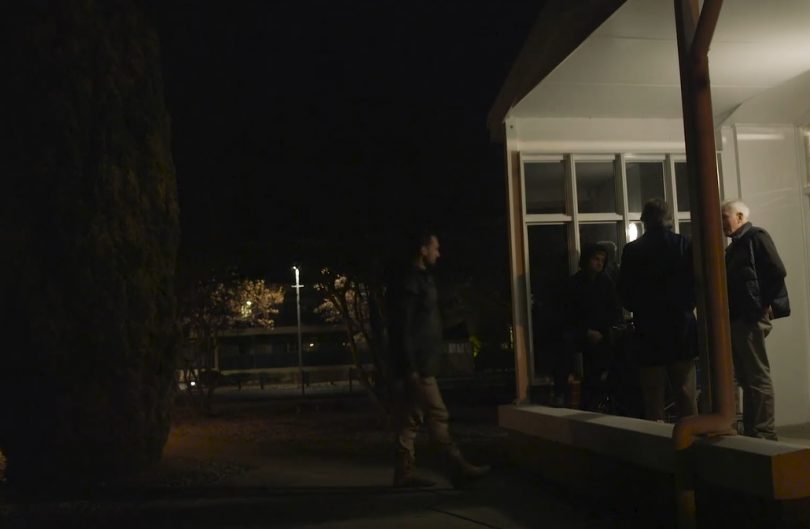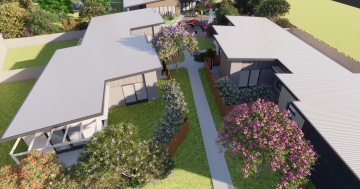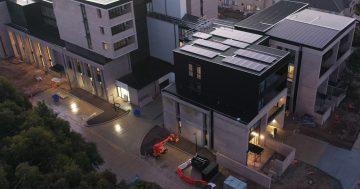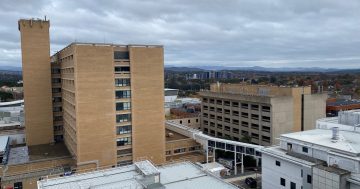
What is a sustainable model of providing accommodation for homeless Canberrans? Photo of Safe Shelter: George Tsotsos.
While a decade ago it was highly unusual to see someone living on the streets here, rough sleeping has become increasingly visible in Canberra now.
The Australian Bureau of Statistics reported through the 2016 census that there were 54 people sleeping rough in the Territory on any given night. This is likely to be an under-estimate but we are not talking huge numbers of people: it’s a small proportion of the total homelessness population that is estimated to be around 1600 people, and a small proportion of the 3,437 people who are either homeless or at risk of homelessness.
Rough sleeping is the pointy end of our housing affordability crisis. While it’s the tip of the iceberg in relation to homelessness here in the Territory, it is hard to ignore. For many, it’s difficult to accept that we shouldn’t be responding to this immediate issue of people not having a safe place to stay at night, particularly as winter descends and the temperature plummets.
While there are crisis accommodation services provided in the ACT, it is extremely difficult for people facing homelessness to immediately access emergency accommodation. Until recently, the ACT Government has been steadfast in rejecting calls to provide a structural response to this emerging issue due to its commitment to Housing First approaches. It has argued that providing emergency accommodation is counterproductive and does nothing to break the cycle of homelessness.
There is evidence to support these concerns. Housing First models were developed in response to evidence that earlier approaches including emergency accommodation were not delivering the best outcomes for people who were homeless. The Housing First model is based on good evidence that accessing stable accommodation is a vital first step for people. This provides an anchor for other services to be provided to people to address underlying issues that led to homelessness. The evidence base for programs such as Common Ground that is operating here in Canberra suggests that this significantly reduces risk and creates better outcomes for those able to access its services.
But does this mean that we can’t provide a permanent arrangement to respond to people who find themselves with nowhere to go on a particular night?
We know that there is a growing demand for homelessness services. The cohort report released by the ACT Government last week has confirmed that there is an unmet need in relation to short term accommodation, particularly for people who are identified as having high and complex needs. We know that there are significant waiting lists for people on priority lists for permanent housing access, and not everyone who needs it can access current homelessness services in our city when they need it. While there has been a commitment to a second Common Ground site, this will not be operating for a number of years, and its service model and eligibility criteria are still being developed. We also know that there will always be people who due to unexpected circumstances will find themselves needing some emergency accommodation. For some people, they are not ready to engage with a program such as Common Ground and need a soft entry point to the service system that does not create undue risk for clients or create barriers due to conditions that are difficult to meet.
With Government reluctant to help to date, the response has fallen on the shoulders of volunteers and the Uniting Church who moved to establish Safe Shelter in 2013. As recently reported, this program has seen an alarming increase in demand over the last three years of operation and this year for the first time had to turn people away due to reaching its capacity.
Last week, as part of the Chief Minister’s Charitable Fund, and after sustained calls by many organisations working with rough sleepers, some funding support for a pilot program for crisis accommodation has been provided. While being hailed as ‘a potential game changer’, this is a very modest investment of $20,000. The location, eligibility and service model are still being developed. It will be important to monitor the rollout of the program and evaluate if this is one way to provide a more sustainable solution than volunteers and people experiencing homelessness sleeping on church hall floors.
If it is deemed a success, it will be important to identify pathways towards ongoing funding.
I believe we need to consider a range of models to respond to our increasing issue of homelessness in the ACT. What do you think we need to do to ensure that people have a safe place to call home?
If you are interested in volunteering at Safe Shelter, find out more information here.




















